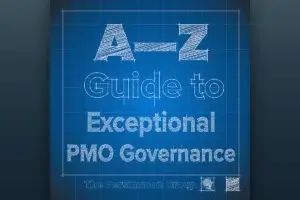What is a Situation Report?
The Situation Report (SITREP) is a form of status reporting that provides decision-makers and readers a quick understanding of the current situation, such as the status of a project, a critical customer issue, or an operational challenge.
The SITREP provides a clear, concise understanding of the situation, focusing on meaning or context in addition to the facts. It does not assume the reader can infer what is important; rather, it deliberately extracts and highlights the critical information. A good SITREP cuts through the noise to deliver exactly what matters: what is happening, what has been done, what will be done next, and what requires attention or decision. It can be delivered in written form or provided verbally in a 30-second to 5-minute duration.
Why Use the SITREP Technique?
In today’s fast-paced business environment, effective communication can mean the difference between the success or failure of your most important projects, customer accounts, operational initiatives, or crisis response efforts. Traditional status reports often suffer from several critical flaws :
- They bury critical information in lengthy narratives
- They focus on activities rather than outcomes
- They lack clear calls to action for decision-makers
- They fail to distinguish between routine updates and urgent issues
The SITREP technique addresses these shortcomings by providing a structured, concise framework originating in high-stakes environments where clarity and efficiency are paramount. While the approach has roots in military operations, its principles apply perfectly to corporate settings where decisions need to be made quickly with clear information.
What makes the SITREP particularly valuable is its emphasis on providing context and meaning—not just raw data. Rather than forcing busy executives to interpret the significance of information, a well-crafted SITREP explicitly highlights what matters and what actions are required.
The technique is equally effective in both written and verbal formats. In fact, verbal updates—whether in meetings, hallway conversations, or calls with executives—often benefit most from the SITREP structure, as it prevents rambling explanations and gets straight to the information that matters for decision-making.
How Does a SITREP Differ from Standard Status Reports?
The SITREP approach offers significant advantages over traditional status reporting methods. Here’s how they compare:
| Standard Status Reports | SITREP Approach |
|---|---|
| Follow a chronological structure | Organized by importance and decision-making relevance |
| Focus on team activities | Focus on progress toward objectives and outcomes |
| Provide exhaustive details without prioritization | Deliver concise, targeted information |
| Lack explicit recommendations | Clearly identify required decisions |
| Assume readers will draw the same conclusions as the writer | Explicitly state implications and needed actions |
| Often buried in email or lengthy documents | Structured format that can be quickly scanned or absorbed in conversation |
| May mix completed work with future plans | Clearly separate past actions from planned next steps |
| Frequently omit risks until they become issues | Proactively highlight potential risks |
This structured approach significantly reduces the cognitive load on readers, allowing them to quickly grasp the situation and take necessary action.
What should be included in a SITREP?
- The situation to date (what has happened)
- A brief summary of “startup details” – date, place, time, who
- Summary of overall situation to date
- Ensure old information is deleted
- Actions to date (what has been done)
- Brief reporting of actions completed to date
- Table format may be used for repeat actions and/or progressive totals or if similar are given e.g. destructions statistics, number of properties visited
- Actions to be completed (what will be done)
- Brief reporting of scheduled/planned actions – typically for the period covered by the SITREP
- As mentioned above, a table may be used for repeat actions
- Where the operation expects to be by the next SITREP
- Issues, Risks, and/or Needed Decisions
- Present brief description of current issues that require attention
- Highlight key risks that are known/reasonably expected to arise before the next SITREP
- Clearly state any decisions that are needed from leadership or stakeholders
- Acknowledgment of significant achievements, failures, etc., can be given here
When Should I Use a SITREP?
SITREPs are particularly valuable in several business scenarios:
- High-Stakes Projects: When clarity and quick decisions are essential to meeting critical deadlines or objectives.
Example: A product launch SITREP might sound like: “We’ve completed 75% of the marketing assets and plan to be finished with them by next Friday. However, sales training is delayed due to incomplete technical documentation. We’ve identified what needs to be added to the technical documentation, and we believe we can complete it in two weeks. Given that, we need to decide today whether to postpone the regional rollout by two weeks or proceed with a limited feature set for the initial release.”
Tips for Project SITREPs:
- Focus on variance from plan rather than listing all activities
- Highlight interdependencies that may affect multiple workstreams
- Keep the timeframe consistent (weekly is often ideal for projects)
- Crisis Management: When situations evolve rapidly, and stakeholders need consistent updates.
Example: During a service outage, an IT SITREP might state: “An unexpected service outage occurred this morning at noon affecting all internal and customer-facing systems. Customer-facing systems were restored at 3:15 PM, but internal systems remain offline. We’ve identified database corruption during this morning’s upgrade as the root cause. We’re implementing a backup restoration expected to complete by 6:00 PM. The main risk is that this extended downtime may impact month-end processing for the finance team.”
Tips for Crisis SITREPs:
- Increase frequency during active crises (potentially hourly)
- Include customer/stakeholder impact assessment
- Clearly indicate who is accountable for each action item
- Cross-Functional Initiatives: When multiple teams need alignment on complex work.
Example: An enterprise software implementation SITREP might sound like: “We’re six months into our ERP implementation project. The finance module configuration is complete and has passed user acceptance testing. During HR module testing, we discovered compatibility issues with our existing time-tracking system. We’ve evaluated three potential solutions and identified one viable option. We’re completing a technical assessment of this solution by Friday. We need your decision on whether to adjust project scope to exclude time-tracking integration initially or extend the timeline by three weeks.”
Tips for Cross-Functional SITREPs:
- Identify where handoffs between teams are occurring
- Highlight decisions that affect multiple groups
- Use consistent terminology across different functional areas
- Regular Executive Updates: When leadership needs concise, meaningful information without excessive detail.
Example: A weekly strategic initiative SITREP might sound like: “We’re preparing to launch our new service offering next quarter. We’ve completed the market research and found our competitor has a stronger mid-market position than anticipated, with a 12% market share gain last quarter. We’ve already adjusted our messaging to emphasize our enterprise security features and tested this with two focus groups, receiving positive results. We’ll finalize the positioning document by Friday and brief sales next week. We need approval for an additional $45,000 in marketing budget for the new creative work if we want to maintain our launch timeline.”
Tips for Executive SITREPs:
- Focus on business outcomes rather than activities
- Include brief context for why issues matter
- Be explicit about what you need from leadership (decisions, resources, etc.)
- Verbal Update Situations: When you need to quickly bring someone up to speed without meandering explanations.
Example: When a senior leader asks for an update in the hallway, a verbal SITREP might be: “The system migration is 80% complete. We’ve successfully moved all customer data. The team is now working on historical transaction records. We don’t need anything from you right now, but I’ll update you again this afternoon once we’re done with the historical records.”
Tips for Verbal SITREPs:
- Practice the format so it becomes second nature
- Start with the most important information first
- Be explicit about what you need from the listener (even if that’s nothing)
Download your free SITREP Template below. For additional tips and SITREP best practices, watch this video from Persimmon’s CEO, Bill Fournet.










